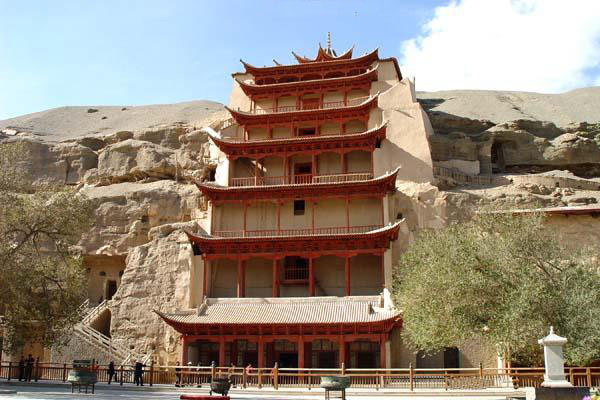
They are cut into the east slope cliff of the Mingsha (Sounding Sand) Mountain, Dunhuang City, Gansu Province, and are popularly called One Thousand Buddha Caves, being the largest Buddhist art treasury existing now in the world. First dug in the second year of the Jianyuan Period of Qin Dynasty (366), they were dug by later dynasties in succession. The caves are divided into five tiers from top to foot, sited upper and lower in good arrangement in proper sequence, covering a 1,600m length from north to south. In their form structure they are mainly of Buddhist caves, central pillar caves and overturned bracket top caves.
There existing and numbered now are 492 caves, over 45,000 m2 of wall paintings and 3,000-plus color statues as well as 5 Tang and Song wooden-structure buildings. In 1900, more than 50,000 pieces of various Confucian classics, historical records, philosophical writings and miscellaneous works from Western Jin to Song Dynasties were discovered. Integrating architecture, painting and sculpture in its one combination, the Mogao are the richest-content cave art treasury of our country. In 1987 they were enlisted in the “World Cultural Heritage List”.










